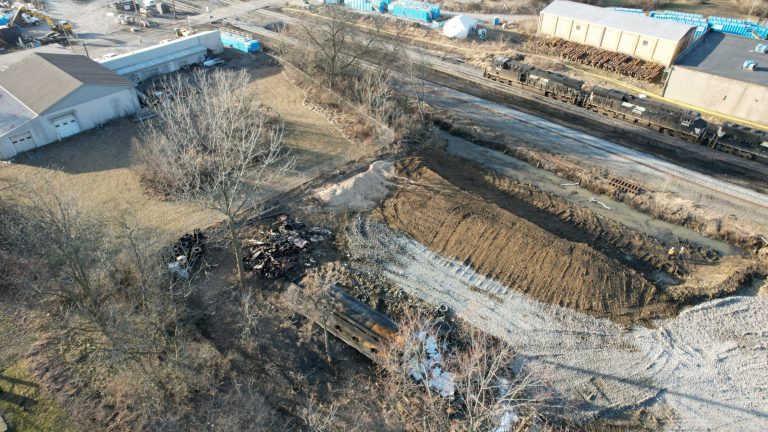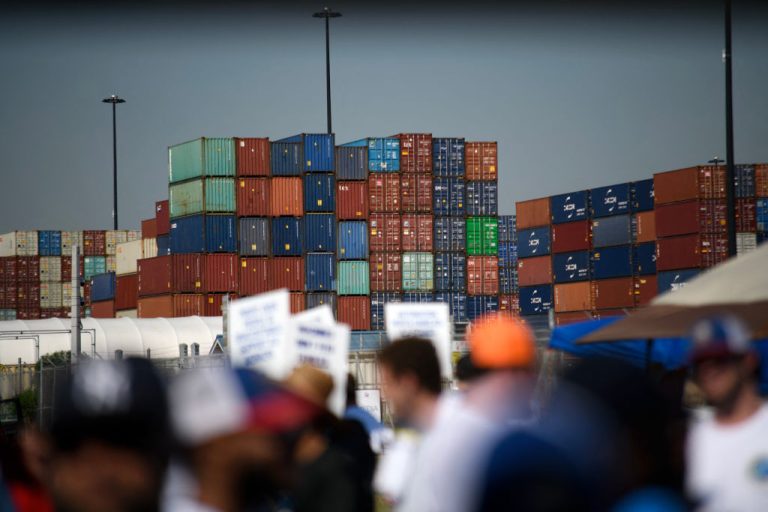U.S. Transportation Secretary Pete Buttigieg has proposed measures to ratchet up regulations on the transport of hazardous materials as authorities have received much criticism for how they responded to the dreadful Feb. 3 derailment of a Norfolk Southern-operated train loaded with toxic chemicals in East Palestine, Ohio.
The accident caused a fire and sent a cloud of smoke over the town, forcing thousands of residents within a one-mile area to evacuate while railroad crews drained and burned off chemicals.
READ MORE
- Air Quality Improves after Ohio Train Derailment, But Environmental Impacts Linger
- East Palestine Rolled Out Digital ID Wearables Days Before Trainwreck
- Fallout From East Palestine Train Derailment May Have Reached As Far North As Canada
- Thought Surveillance Wearable Devices To Be New Workplace Normal: Davos 2023 Presentation
- Buttigieg Suggests ‘Vehicle Miles Tax’ to Fund $3 Trillion Infrastructure Plan
Even though officials initially sought to downplay the risks, many livestock, wildlife, and birds were killed. Some experts said the environmental impact of the toxic derailment could linger on for years.
So far, no human fatalities have been reported in the relatively underreported calamity, but many warn of large-scale environmental destruction, as well as future risks to life and health.
Buttigieg’s proposals
Success
You are now signed up for our newsletter
Success
Check your email to complete sign up
Buttigieg on Tuesday urged major railroads and Congress to take significant steps.
“This represents an important moment to redouble our efforts to make this far less likely to happen again,” Buttigieg told reporters ahead of the announcement, calling on Congress to “untie our hands so that we can do more.”
He also plans to pursue new regulations to boost rail safety “to the extent possible” under current law. He would initiate additional focused inspection programs and urge rail companies to adopt safer tank cars by 2025 rather than 2029, as required under a law passed in 2015.
He furthermore mused about his plans for a whistleblower protection program, boost hazardous shipment notifications to state emergency response teams, and provide paid sick leave saying, “a healthy and well-supported workforce is a safer workforce.”
On top of that, Buttigieg wants Congress to make it easier to impose new train safety regulations and increase U.S. Department of Transportation (USDOT) fines for violating safety regulations from the current maximum of $225,455 at least ten-fold.
“For a multi-billion rail company posting profits in the billions every year, that is just not enough to have an adequate deterrent effect,” he said.
What are the odds?
However, it is questionable whether Buttigieg’s proposals will reduce the risk of such a tragedy ever happening again. All safety measures seemed to be in place, and there may be other factors beyond the control of the transportation secretary.
As we already reported, the fatal train set’s heat detection device already gave off an alarm indicating one of the train’s axles was not functioning well for at least 20 miles. Still, somehow the train crew failed to follow up on the warning.
In the days following the Ohio train crash, two other train accidents occurred involving multiple cars transporting vast amounts of very potent toxic substances in Enoree, South Carolina. Those crashes may also pose great risks to crops, air, and groundwater.
Notably, East Palestine rolled out a wearable ID program days before the train debacle took place. Authorities handed out wearables that contained MyIDs detailing private medical information that could be read out in case of disaster scenarios in which victims could no longer speak.
Another coincidence reported by various media concerns the disaster film White Noise released by Netflix in 2022, which depicts a massive toxic chemical spill in Ohio, in East Palestine.
Reuters contributed to this report.







